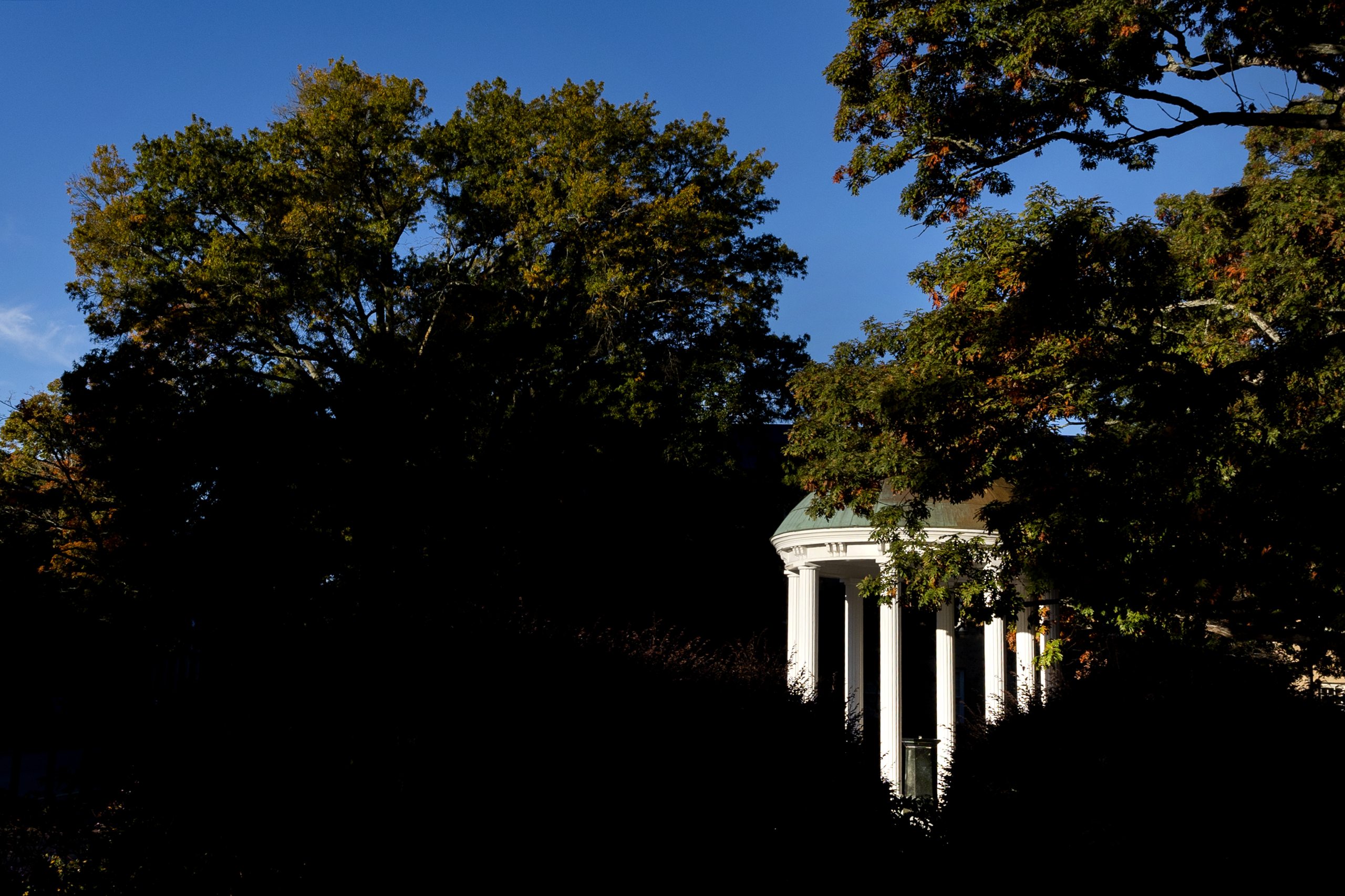9/11 mobile exhibit stops at UNC-Chapel Hill
Sponsored by the UNC's College Republicans and Young Democrats, the “9/11 NEVER FORGET” mobile exhibit made a stop at Carolina.
For many of the Carolina students silently gathering in the parking lot behind Memorial Hall on Sept. 22, the terrorist attacks of Sept. 11, 2001 are a distant memory from childhood.
And that’s exactly why the Stephen Siller Tunnel to Towers Foundation has been driving the “9/11 NEVER FORGET” mobile exhibit across the country — to serve as a tool to educate the country’s younger generations.
“We learned that 9/11 is not being taught in any great detail to the next generation, so we decided to put together this exhibit,” said John Hodge, the chief operations officer for Stephen Siller Tunnel to Towers Foundation.
The rolling museum’s most recent stop was the University of North Carolina at Chapel Hill to share its story with members of the Carolina community. The visit was sponsored by the UNC’s College Republicans and Young Democrats.
The exhibit arrived on campus Monday evening with an escort of local police and fire departments, and motorcycle groups to escort the trailer onto campus. The following morning, after a brief opening ceremony, the free rolling museum opened to the public until 10 p.m. Tuesday.
“It’s humbling, an honor and a privilege to host you,” Chancellor Carol L. Folt told the organization and assembled audience.
Housed in a 53-foot tractor-trailer that unfolds into a 1,000-square-foot exhibit, the 9/11 NEVER FORGET is part of the Stephen Siller Tunnel to Towers Foundation’s initiative to pay tribute to all first responders, living and dead, who courageously responded to the call of duty on 9/11. The exhibit made its debut on Sept. 11, 2013, and have been traveling around the country since that time.
The Siller family started the Stephen Siller Tunnel to Towers Foundation to honor the memory of their brother, Stephen, a New York City firefighter who lost his life on September 11 after strapping on his gear and running through the Brooklyn Battery Tunnel to the Twin Towers. Siller was driving home after his shift when he heard the news about the attack. He immediately turned around to offer his assistance.
Featuring artifacts such as steel beams from the towers, documentary videos and recordings of first responder radio transmissions from 9/11, the exhibit provides a visual of the attacks and its aftermath.
“For me I think the personal stories resonate,” Folt said. “It’s so direct and so honest it just really brings it home. This was about real people saving lives.”
Members of the New York Fire Department who were among the fire fighters that first responded to the World Trade Center guided visitors through the exhibit, explaining what happened on 9/11 and sharing their personal stories from the site.
“This exhibit tells the stories of the heroes of 9/11,” Hodge said. “It’s a hero-centric exhibit. We want to tell the positive stories of what happened on that day. We want to make sure that the next generation knows that there were honest to goodness, true-blue America heroes that walked the face of the earth that day.”
For Carolina senior Casie Mangin, the exhibit was an emotional experience. Her uncle, Michael Lynch, was responding to the call and was killed when the second building collapsed. Mangin spotted her uncle’s name on the exhibit’s wall.
“All of the first responders who were there are fathers, they’re brothers, they’re sons, they’re uncles,” she said. “That was just their job to go and do that, and they ended up paying the ultimate sacrifice to try to help as many people as they could.”




